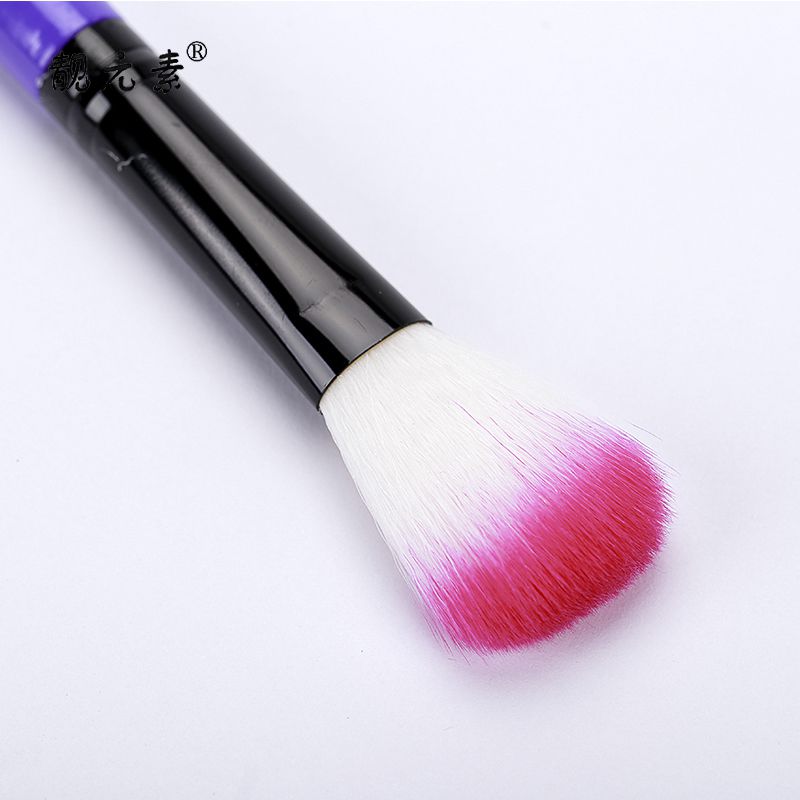Industry news
Lush Launches "Brush Take-Back Program": Recycles Old Bristles into New Packaging Materials
- 706 Views
- 2025-10-21 01:31:22
Lush Launches "Brush Take-Back Program": Turning Old Cosmetic Bristles into Sustainable Packaging
The beauty industry is under increasing pressure to address its environmental footprint, with packaging waste and product lifecycle sustainability emerging as key concerns. In response, Lush, the UK-based cosmetics giant known for its ethical stance, has recently unveiled its "Brush Take-Back Program"—an innovative initiative that recycles used cosmetic brush bristles into eco-friendly packaging materials. This move not only tackles a overlooked waste stream but also sets a new standard for circularity in beauty.

Cosmetic brushes, a staple in makeup routines worldwide, often end up in landfills once their bristles fray or handles break. While some brands focus on recyclable packaging, Lush’s program dives deeper: it targets the brushes themselves, which are typically made of synthetic fibers (like nylon) or natural materials (such as goat hair), both of which can take years to decompose. "Brushes are a silent waste problem," explains Emma Green, Lush’s Sustainability Director. "Consumers replace them regularly, but few options exist to recycle them—until now."
Here’s how the program works: Starting this month, customers can drop off their old, worn-out brushes at any Lush retail store or mail them via a prepaid label available on the brand’s website. Once collected, the brushes undergo a rigorous three-step process. First, they are sanitized using plant-based cleansers to remove makeup residue and bacteria. Next, the bristles are separated from handles (the latter are recycled separately as wood or plastic, depending on material). Finally, the cleaned bristles—whether synthetic or natural—are shredded into fine fibers and mixed with recycled paper pulp or bioplastic to create sturdy, biodegradable packaging.
The resulting material will be used for Lush’s product boxes, gift wrap, and even select product containers, replacing up to 30% of the brand’s current plastic-based packaging by 2025. "This isn’t just recycling—it’s upcycling," Green emphasizes. "By transforming low-value waste (old bristles) into high-function packaging, we’re closing the loop in a way that traditional recycling often can’t."
Industry experts praise the initiative for its focus on "upstream sustainability." Unlike many recycling programs that target post-consumer packaging, Lush’s program addresses the product itself, preventing bristles from entering landfills at the end of their lifecycle. "Most beauty brands stop at ‘recycle our bottles,’ but Lush is going further by reimagining the entire brush lifecycle," notes Clara Martinez, a sustainable beauty analyst at EcoBeauty Insights. "It’s a smart move that aligns with consumer demand for brands that own their products’ full environmental impact."
Early consumer response has been positive. In pilot tests across 50 Lush stores in Europe and North America, over 12,000 brushes were collected in the first month alone. "I’ve had my favorite blush brush for years, and I hated the idea of throwing it away," says Paris-based customer Amélie Dubois. "Now I can drop it off and know it’s being turned into something useful—it makes me feel like I’m part of the solution."
Beyond its immediate impact, Lush’s program signals a shift in how beauty brands approach sustainability. By focusing on a typically overlooked product component (bristles) and creating a closed-loop system, the initiative challenges competitors to think beyond surface-level eco-friendly claims. "Sustainability isn’t just about ‘greenwashing’ with recyclable labels," Green adds. "It’s about redesigning systems so nothing goes to waste. If we can turn a frayed brush into a box that holds a new product, we’re proving circular beauty is possible."
As the program scales globally—with plans to expand to Asia and Australia by late 2024—Lush aims to collect 100,000 brushes annually, diverting an estimated 15 tons of waste from landfills and reducing its plastic packaging reliance by 25%. For the beauty industry, this isn’t just a recycling program; it’s a blueprint for turning waste into worth.











